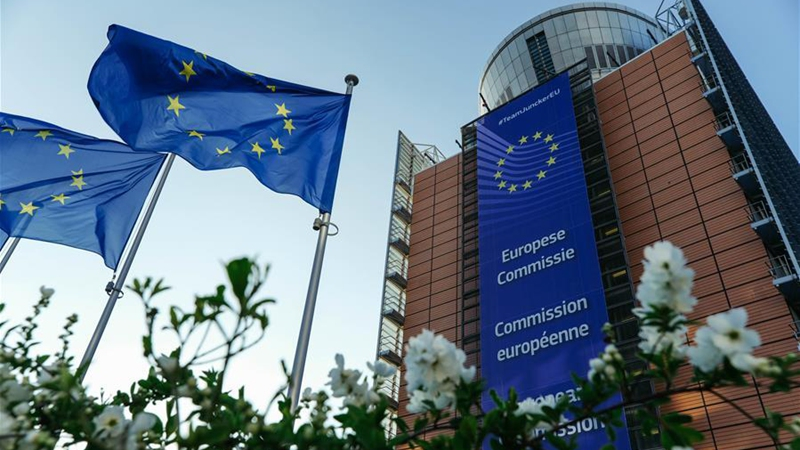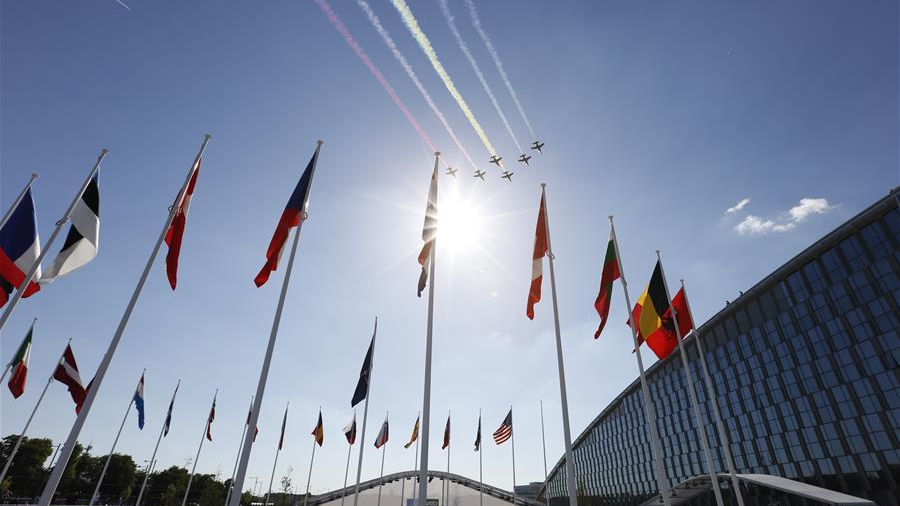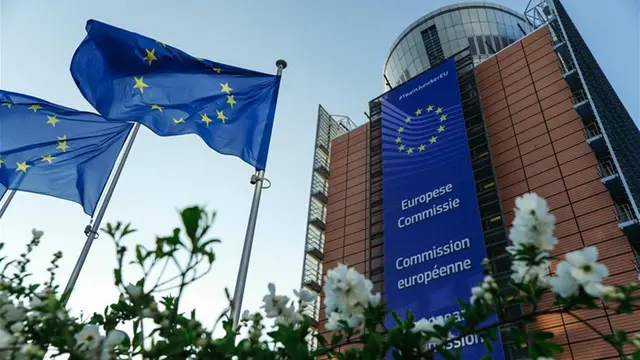
Photo shows the Berlaymont Building, the European Commission headquarters, Brussels, Belgium, March 29, 2019 /Xinhua
**Editor's note: **Lan Shunzheng is a research fellow at the Charhar Institute and a member of the Chinese Institute of Command and Control. The article reflects the author's opinions, and not necessarily the views of CGTN.
When talking about the 2030 outlook for NATO at a forum hosted by the Atlantic Council and the German Marshall Fund of the United States on June 8, NATO Secretary General Jens Stoltenberg said the rise of China "fundamentally changed the balance of power in the world, contributed to the economic and technological competition for hegemony, to open the threat of social and individual freedom" and so on.
On June 9, in the end of the 10th round of China-European Union (EU) High-level Strategic Dialogue, the EU's Foreign and Security Policy High Representative Josep Borrell told reporters he did not think China brought a military or security threat to the EU, for the EU to have a realistic perspective on China-EU relations, and that the two sides in many issues of common interest. It is clear that the very different attitudes of NATO and the EU towards China have exposed their differences.
Since Europe has always been NATO's core security concern, the EU is NATO's strategic partner. Thus, since the establishment of the formal institutionalized partnership between NATO and the EU in 2001, the relationship between the two has developed rapidly.
But in recent years, with the change of the international situation, the rift between NATO and the EU is also widening, especially in the security field.
On the one hand, Trump put forward the "outdated NATO" theory during the 2016 U.S. election, requiring allies to "fully reimburse" the U.S. military forces, and linking the burden shared between Allies and the U.S.' fulfillment of NATO commitments.
However, due to the weak economy and different security positions of European countries, it is difficult for European countries to meet the demand of the U.S. to increase their military expenditure, which was severely criticized by Trump at the 2018 Brussels summit.
The U.S., on the other hand, sees NATO as a transactional alliance rather than a military alliance that upholds shared values between the U.S. and Europe, and is willing to provide defense support only to Allies deemed to share NATO's responsibilities fairly.
Therefore, when NATO is building the European security order, it is more based on its own needs, but gives little consideration to the security requirements of other European countries, and even expects them to accept the design of NATO, which will undoubtedly arouse the aversion of some EU countries. For this reason, in recent years, Macron, Merkel and other leaders have questioned whether the United States maintains its position as an ally in Europe and called on Europe to build a defense force independent of NATO to strengthen its security.

Aircrafts fly over the NATO new headquarters at its handover ceremony in Brussels, Belgium, May 25, 2017. /Xinhua
On the issue of China, NATO and the EU also have their own plans. After the end of the Cold War, NATO still needs to build new strategic rivals to enhance the legitimacy of its existence in the new environment.
In addition to Russia, NATO defines China as an important object of security governance. NATO argues that China's rise, with what Stoltenberg alleged as the world's second-largest defense budget and a new modern military capability, has changed the global balance of power. Therefore, positioning China as the imaginary enemy of NATO and playing up the Threat of China can not only use other NATO members to contain China, but also keep the U.S. as the "leader".
As Stoltenberg said this time: "They (China) already have the second largest defense budget [in the world] and are investing heavily in modern military capabilities, including missiles that can reach all NATO allies..." To this end, NATO should be "built into a stronger political union", including enhanced cooperation with "like-minded" partners in the Asia-Pacific region such as Australia, Japan, South Korea and New Zealand.
However, the EU has a different attitude towards China. In regard of economic and trade cooperation, the two sides have set up a deep foundation. For example, the Belt and Road Initiative has expanded the platform for cooperation between China and the EU, and the EU has taken a positive attitude towards the Initiative.
The EU has released the "EU-China Strategic Outlook" report in March 2019, calling for a closer bilateral economic cooperation and the implementation of the Eurasian connectivity strategy.
Therefore, the EU, beset by multiple crises, urgently needs to carry out multi-level cooperation with China, and establishing China as a strategic rival is tantamount to giving up major development opportunities for China-Eu cooperation.
Besides, the hostile attitude of NATO towards China is not fully recognized. In late 2019, U.S. Secretary of State Mike Pompeo declared that NATO was facing an attempt by China to undermine its security, so the alliance must continue to evolve and adopt a new security perspective.
In the same year, the NATO Summit launched an "internal report" on China policy and a plan to "address the opportunities and challenges posed by China's rise". Germany and France disagreed with the U.S. and NATO, with Macron bluntly saying the alliance's common enemy is terrorism, not Russia or China.
It can be seen that in the future, the EU based on its vital interests and development needs will seek balance in its multiple relations with NATO, the United States and China, instead of blindly following the instigation of others.
(If you want to contribute and have specific expertise, please contact us at [email protected].)
 简体中文
简体中文





